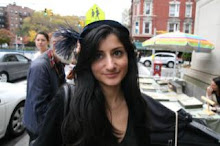“The famous Bronco!” I exclaimed.
“I don’t get it,” my friend said,
quizzically.
“It is from the car chase…” I began to
explain.
“Didn’t people die that day?” he
interrupted.
“Well, in a sense, yes. Two
people. But this happened after they died. O.J. was going
to be arrested and he decided to run from the police…”
“Why is that up there? He is a
murderer!”
“If the glove doesn’t fit you must acquit,
and the glove didn’t fit! It is supposed to be art?”
I couldn’t explain it anymore. Los
Angeles can be playfully unforgiving at times. People like to mark
time with tragedies. People die, buildings collapse, earthquakes
rattle, floods devour, and we remember where we were when we first saw it, or
heard about it, or felt it.
In the early 1990s, in Los Angeles we
experienced our tragedies through the vantage point of a camcorder, a helicopter,
or a courtroom, all played out on tv. I used to come home every day
after school and watch the O.J. trial. I was in gym class when a
small portable radio was brought in; the students huddled around, waiting for
news of the verdict.
Now there is another famous trial that I am
following – that of Dzhokhar Tsarnaev. The trial began on January 5,
2015 and there are more than a dozen journalists live-tweeting the court
proceedings from Boston. I read through their tweets daily, trying
to understand what happened, and why. The prosecution is still
putting up their case, but I am more interested in seeing how the defense is
presented. And I inevitably wonder to myself, if I was a juror,
would I find Tsarnaev guilty, and whether, after his conviction, I would
sentence him to death? In law school, we are conditioned to believe
that the death penalty is not just. But, sometimes, it is the right
of society to impose punishments on criminals for the purpose of protecting and
serving the interests of the people and the society as a whole. It
is clear that Tsarnaev and his brother planned and carried out the bombings
that killed three people and wounded hundreds more. Would executing
him be productive in preventing future similar acts?
Recently, I listened to Serial, a podcast
about Adnan Syed, who in 2000 was convicted of killing his
ex-girlfriend. Syed was given life imprisonment. Has that
punishment rehabilitated him? If O.J. was convicted of murder would
that have deterred the Adnans and Dzhokhars of our world from committing such
heinous and violent acts?
Whenever I drive by the billboard I think
about all these questions. It is a testament to the power of art
when such a photo is able to evoke such reflection and thought. No
words, just LA iconography.

No comments:
Post a Comment